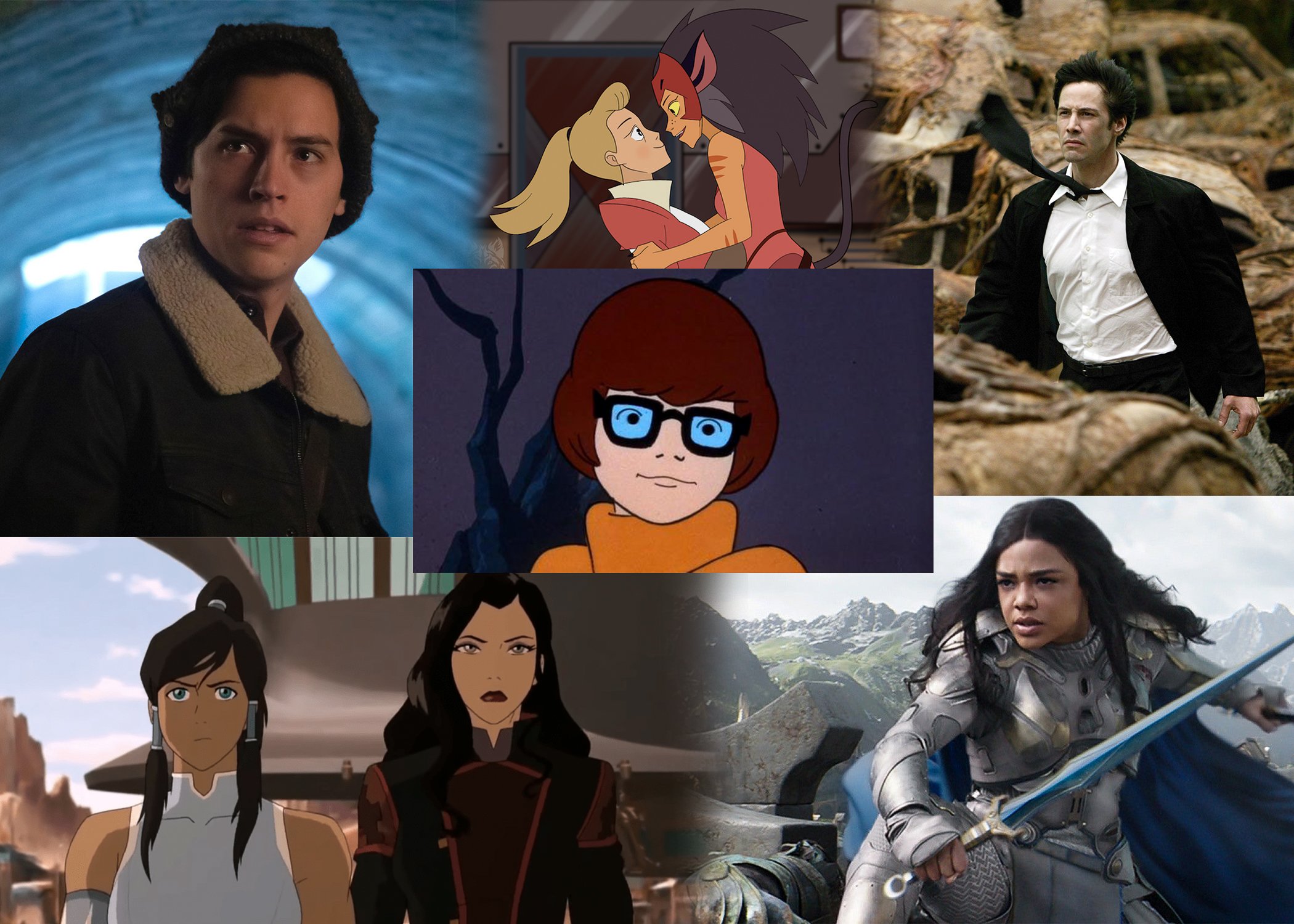Scooby-Doo has always been a dog, Velma has always been a lesbian
Velma Dinkley joins the slowly growing community of LGBTQIA+ cartoon characters in a media world where representation is an uphill battle. Photo collage by SIMRAH AHMAD, staff photographer
In a plot twist that everyone saw coming, Velma Dinkley, Mystery Incorporated’s resident nerd, was officially portrayed as a lesbian for the first time since the character originated in 1969.
A scene in the new film “Trick or Treat Scooby-Doo!” showcased Velma notably swooning over Coco Diablo, a white-haired, turtleneck wearing crime boss. This attraction lasts throughout the film, even prompting her to tell Daphne that she is “crushing big time.”
Senior television writing and production major Rachel Othon often watched the 1969 show “Scooby Doo, Where Are You!” while she was growing up. She told The Panther she felt this representation was important because it could not be edited out.
“It’s kind of a big deal that Velma’s now outright gay,” Othon said. “It’s exciting for people who were invested in the Scooby Doo lore.”
For some time now, Velma has been considered a gay icon. Her character is one of the many in film and television whose sexuality is assumed but never outright stated or shown on screen.
Efforts had been made in the past to portray Velma as a lesbian, most notably by director James Gunn in the 2002 live-action Scooby Doo and producers of the animated series Scooby Doo: Mystery Incorporated, but such attempts never came to fruition due to Warner Bros. “watering down” the script, Gunn wrote in a now-deleted tweet.
There are several characters whose sexuality has been considered an “open-secret,” leading fans to speculate and assume while they watch anxiously, waiting for a scene or even just a moment to confirm their suspicions.
For Othon, speculation revolved around beloved childhood movie, “High School Musical.”
“I always think of Ryan from High School Musical,” Othon said. “In the third movie they try to pair him with Kelsey, but she was obviously a lesbian.”
While children’s animated television show “The Legend of Korra” was airing from 2012 to 2014, fans often wondered if the relationship between main characters Korra and Asami might go beyond friendship, and such dreams were realized, or at least somewhat implied, in the final episode of the show — four seasons later.
In the final scene, Korra and Asami are shown holding hands. In an open letter written by co-creator Bryan Konietzko after the release of the finale, he confirmed the relationship with the phrase “Korrasami is canon.”
A similar formula was followed by the animated show She-Ra and the Princesses of Power. Main characters Adora and Catra were the subject of much relationship speculation, but such a relationship only became a reality in the finale episode, when Catra confessed her love and the two kissed.
In an email to The Panther, Professor Gordon Babst, who teaches political science courses, said he felt this hesitancy to reveal characters as part of the LGBTQIA+ community comes from the need to make content that appeals to a wide audience.
“I think producers and investors take their time testing these waters despite what might be their own positive attitudes, especially with the threat of boycotts and other adverse impacts being too progressive too fast might garner,” Babst wrote. “It may be a mistake to expect pathbreaking characters before their time from the corporate world.”
Senior television writing and production major Matt Gannon told The Panther that he felt Velma’s representation as a lesbian was important in children’s media, especially because the Scooby-Doo franchise has portrayed Fred and Daphne’s heterosexual relationship.
“I think it will have a positive impact in further showing kids that this type of thing is normal (and) it is in the world,” Gannon said. “Treating it the same as any heterosexual relationship or attraction in kids media is a good thing.”
Though children’s media is more likely to be hesitant about LGBTQIA+ representation, teen and adult media can often fall into the same trap.
Notable examples include John Constantine — played by Matt Ryan in the show “Constanine” — whose bisexuality was only confirmed in a later episode of “Legends of Tomorrow,” Marvel’s Valkyrie, played by Tessa Thompson, who initially had a scene confirming she was bisexual cut from “Thor: Ragnarok” before her sexuality was confirmed in “Thor: Love and Thunder” Jughead Jones, whose comic book counterpart is asexual but is not currently depicited as such in the show “Riverdale.”
Hesitancy regarding LGBTQIA+ representation is not only confined to children’s media, but to all television and film that must work to appeal to large audiences. But as the reluctance to shroud children’s media begins to fade, one can only hope it will soon dissipate altogether.
For now, Velma is finally a lesbian. And that’s an achievement worthy of a Scooby Snack.

